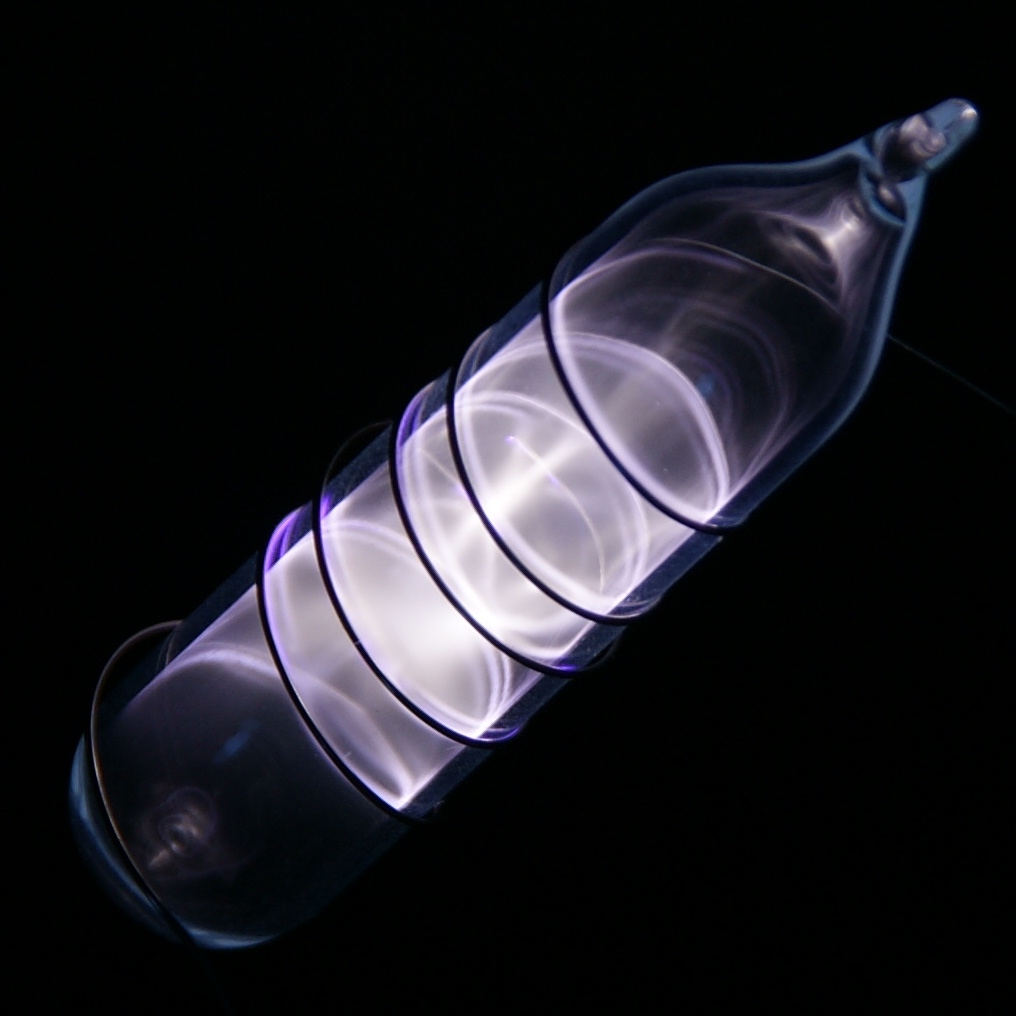Krypton
36
Kr
Ryhmä
18
Jakso
4
Lohko
p
Protonia
Elektronit
Neutronia
36
36
48
Yleiset ominaisuudet
Järjestysluku
36
Atomipaino
83,798
Massaluku
84
Luokka
Jalokaasut
Väri
Väritön
Radioaktiivisuus
Ei
From the Greek word kryptos, hidden
Kiderakenne
Pintakeskinen kuutiollinen
Historia
Scottish chemist Sir William Ramsay and his assistant English chemist Morris Travers discovered krypton in 1898 in London.
They found krypton in the residue left from evaporating nearly all components of liquid air.
William Ramsay was awarded the 1904 Nobel Prize in Chemistry for discovery of a series of noble gases, including krypton.
They found krypton in the residue left from evaporating nearly all components of liquid air.
William Ramsay was awarded the 1904 Nobel Prize in Chemistry for discovery of a series of noble gases, including krypton.
Elektroneja elektronikuorilla
2, 8, 18, 8
Orbitaalirakenne
[Ar] 3d10 4s2 4p6
When ionized, krypton gas emits bright white light
Fyysiset ominaisuudet
Olomuoto
Kaasu
Tiheys
0,003733 g/cm3
Sulamispiste
115,79 K | -157,36 °C | -251,25 °F
Kiehumispiste
119,93 K | -153,22 °C | -243,8 °F
Sulamislämpö
1,64 kJ/mol
Höyrystymislämpö
9,02 kJ/mol
Ominaislämpökapasiteetti
0,248 J/g·K
Esiintyvyys maankuoressa
1,5×10-8%
Esiintyvyys maailmankaikkeudessa
4×10-6%

CAS-numero
7439-90-9
PubChem CID-numero
5416
Atomiominaisuudet
Atomisäde
88 pm
Kovalenttisäde
116 pm
Elektronegatiivisuus
3,00 (Paulingin asteikko)
Ionisoitumispotentiaali
13,9996 eV
Moolitilavuus
38,9 cm3/mol
Lämmönjohtavuus
0,0000949 W/cm·K
Hapetusluvut
2
Käyttö
Krypton is used in certain photographic flash lamps for high-speed photography.
Krypton-83 has application in magnetic resonance imaging (MRI) for imaging airways.
Krypton is used as a filling gas for energy-saving fluorescent lights and as an inert filling gas in incandescent bulbs.
Krypton-83 has application in magnetic resonance imaging (MRI) for imaging airways.
Krypton is used as a filling gas for energy-saving fluorescent lights and as an inert filling gas in incandescent bulbs.
Krypton is considered to be non-toxic
Isotooppi
Vakaat isotoopit
78Kr, 80Kr, 82Kr, 83Kr, 84Kr, 86KrEpävakaat isotoopit
69Kr, 70Kr, 71Kr, 72Kr, 73Kr, 74Kr, 75Kr, 76Kr, 77Kr, 79Kr, 81Kr, 85Kr, 87Kr, 88Kr, 89Kr, 90Kr, 91Kr, 92Kr, 93Kr, 94Kr, 95Kr, 96Kr, 97Kr, 98Kr, 99Kr, 100Kr, 101Kr